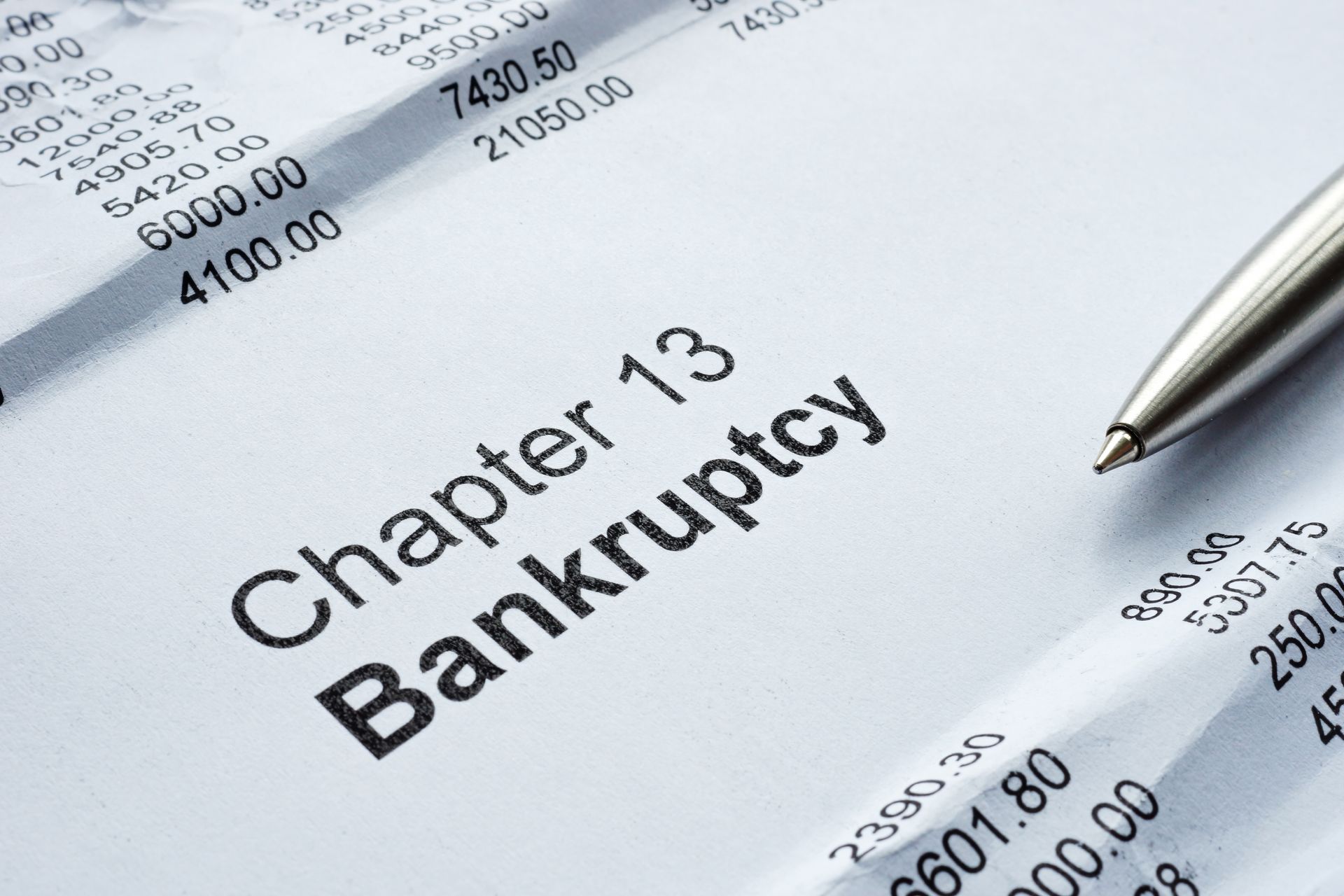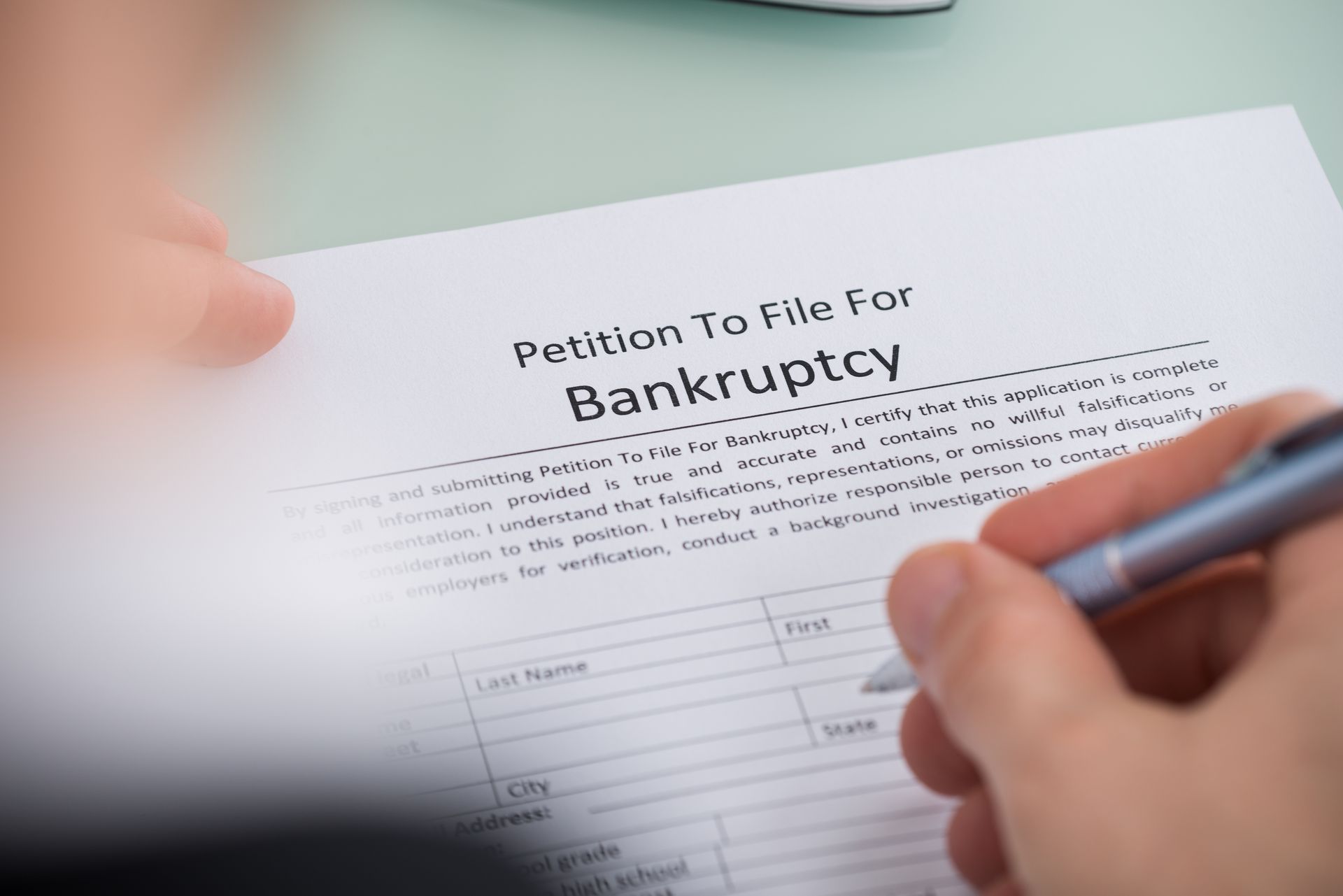Can a Company Survive Chapter 11 Bankruptcy? Exploring Strategies for Success
Can a Company Survive Chapter 11 Bankruptcy?

Chapter 11 bankruptcy, often called "reorganization" bankruptcy, is a legal process designed primarily to reorganize businesses with significant debts. It is most commonly utilized by corporations, partnerships, and LLCs but is also available to individuals whose debts exceed the limits for Chapter 13 bankruptcies. Under Chapter 11, a company can restructure its debts while continuing its daily operations.
The Purpose of Chapter 11 for Companies Facing Financial Difficulties
The primary aim of Chapter 11 is to allow a struggling company to restructure its business finances and operations, thus enabling it to become profitable again. It provides a vital lifeline, allowing the business to alter debt terms, discharge unmanageable liabilities, and reorganize its corporate structure and operations under court supervision. This restructuring is intended to assist the company in balancing its income and expenses, regaining profitability, and continuing its operations without the immediate threat of creditors' claims.
Can a Company Successfully Emerge from Chapter 11?
One of the most critical questions for any business considering Chapter 11 is whether it can successfully emerge from the process. Emerging from Chapter 11 is challenging and requires a solid strategic plan for reorganization, committed leadership, and, often, a favorable market environment. The success of the process not only ensures the company's survival and its ability to sustain operations and grow post-bankruptcy. In this blog post, we will explore what it takes for companies to successfully navigate through Chapter 11, examining key factors, common pitfalls, and strategies that have helped companies recover and thrive post-bankruptcy.
What is Chapter 11 Bankruptcy?
Chapter 11 bankruptcy is a form of bankruptcy that involves a reorganization of a debtor's business affairs, debts, and assets. Named after the U.S. bankruptcy code 11, it is available to every business, whether organized as a corporation, partnership, or sole proprietorship, and to individuals. However, it is most prominently used by corporate entities. In a Chapter 11 case, the debtor usually remains in control of its business operations as a "debtor in possession" (DIP) and is subject to the oversight and jurisdiction of the court.
Differences Between Chapter 11, Chapter 7 and Chapter 11 Bankruptcies
- Chapter 11: Primarily used by businesses to restructure while continuing to operate. The debtor retains control of assets and operates under a reorganization plan that must be approved by creditors and the court. Chapter 11 provides flexibility in terms of restructuring and does not usually involve the liquidation of assets.
- Chapter 7: Known as liquidation bankruptcy, it is used by individuals, partnerships, and corporations. The debtor must give up property, which is then sold to pay off creditors. For businesses, this generally means the end of operations as the business is dissolved.
- Chapter 13: Often used by individuals with a regular income, Chapter 13 allows debtors to keep their property and repay creditors in part or total over three to five years. It's a reorganization bankruptcy for individuals, contrasting with Chapter 11's focus on business entities.
Importance of Chapter 11 for Businesses
Chapter 11 bankruptcy is crucial for businesses because it provides a second chance at success. Businesses facing insurmountable debt and ongoing financial pressures can use Chapter 11 to reorganize operations and financial obligations, helping them to strategically:
- Restructure debts while keeping the business alive.
- Maintain control over assets and operations, which can be critical for long-term survival.
- Implement operational changes and renegotiate leases and contracts under more favorable terms.
- Preserve jobs and continue to provide services or products to the market.
Ultimately, Chapter 11 can be a vital tool for businesses that must adjust their business models and structures in response to financial adversity. It can allow them to emerge as leaner, more efficient, and more financially stable entities.
The Chapter 11 Process Explained
Filing for Chapter 11: Criteria and Initial steps
Criteria: Chapter 11 bankruptcy can be filed voluntarily by a debtor or involuntarily by creditors that meet specific requirements. To file voluntarily, a business must be unable to meet its debt obligations and seek to reorganize its debts. There is no minimum or maximum debt requirement for Chapter 11, making it accessible for large and small businesses.
Initial Steps: The process begins with filing a petition with the bankruptcy court serving the area where the debtor has a domicile or principal place of business. The petition includes various financial statements detailing assets, liabilities, income, and expenditures. This filing automatically triggers a bankruptcy stay, stopping most collection actions against the debtor and the debtor's property.
The Role of bankruptcy courts and the appointment of a trustee
Bankruptcy Courts: The bankruptcy court plays a critical supervisory role in the Chapter 11 process. It oversees the debtor’s operations and reorganization efforts to ensure compliance with bankruptcy law and protect the interests of the debtor and the creditors.
Appointment of a Trustee: Unlike other bankruptcy proceedings, appointing a trustee in Chapter 11 is not mandatory. The debtor generally continues to operate the business as "debtor in possession" (DIP). However, a trustee may be appointed if the court finds evidence of fraud, incompetence, or gross mismanagement or if it is in the interests of creditors and the estate.
Fundamental Components of Chapter 11 Bankruptcy
- Reorganization Plan: The cornerstone of Chapter 11 is the reorganization plan proposed by the debtor, which outlines how it will restructure its debts and operations to ensure viability post-bankruptcy. This plan must be voted on by creditors and approved by the court. It typically includes modifications to the terms of debts, leases, and contracts and can provide for downsizing to reduce expenses and free up assets.
- Automatic Stay: Upon filing for Chapter 11, an automatic stay immediately takes effect. This stay halts all collection activities, lawsuits, foreclosures, and all other actions by creditors against the debtor or the debtor's property. The stay provides a period of relief during which the reorganization plan can be developed without the pressure of creditors' actions.
- Debtor in Possession: The debtor usually controls its assets and operates the business under the court's oversight. As a DIP, the debtor has the fiduciary duty to protect the rights of creditors and the estate, managing operations effectively during bankruptcy. The DIP has significant powers, including hiring professionals, obtaining financing, and making business decisions.
Through this structured process, Chapter 11 allows businesses facing severe financial distress an opportunity to realign their operations and finances strategically, aiming for a successful and sustainable exit from bankruptcy
Success Factors For Surviving Chapter 11
Strategic Reorganization and restructuring plans
- Strategic Planning: The cornerstone of a successful Chapter 11 process is a well-thought-out strategic plan that addresses the business's financial and operational aspects. This plan should detail how the business will adjust its operations to become more efficient and restructure its debt to manage payments. Elements often include cost reduction, renegotiating contracts, divesting non-core assets, and focusing on core business strengths.
- Financial Restructuring: Financial restructuring under Chapter 11 can include renegotiating debt terms, obtaining new financing, and altering the company's capital structure. Successful plans often prioritize long-term viability over short-term gains, ensuring the business is not just solvent but also competitive in its market.
- Operational Adjustments: Operational restructuring might involve changes in management, cutting underperforming divisions, enhancing product lines, or shifting strategic focus. The goal is to align the company’s operations with current market conditions and future outlooks.
Common pitfalls and how to avoid them
Overoptimism in Financial Projections: A common pitfall is overly optimistic financial projections. Companies should base their forecasts on realistic, conservative scenarios and have contingency plans to avoid this.
Failure to Secure Stakeholder Support: Chapter 11 can only succeed if critical stakeholders, such as creditors and vendors, support the reorganization plan. It's crucial to engage with these stakeholders early in the process to negotiate acceptable terms for all parties involved.
Neglecting Business Operations During Reorganization: Focusing too heavily on financial restructuring at the expense of day-to-day operations can lead to a decline in business performance. Maintaining operational integrity is crucial, requiring management to balance both aspects effectively.
Inadequate Leadership: Successful navigation through Chapter 11 requires strong leadership. Ineffective leadership can be mitigated by bringing in new management or consulting with restructuring experts with a track record of turning companies around.
By understanding these success factors and being aware of common pitfalls, businesses can better plan for and navigate the complexities of Chapter 11, improving their chances of emerging more robust and resilient.
Challenges Faced During Chapter 11 Bankruptcy
Financial Challenges
- Debt Restructuring: One of the primary financial challenges during Chapter 11 is restructuring existing debt to be feasible for the company's future operations and acceptable to creditors. This often involves complex negotiations to modify terms such as interest rates, repayment schedules, and the principal amount owed. Companies must strike a delicate balance between alleviating immediate financial pressures and maintaining long-term financial health.
- Securing New Financing: Obtaining new financing during Chapter 11 is particularly challenging as the company must convince lenders of its potential for successful reorganization and future profitability. Debtor-in-possession (DIP) financing is a unique form of financing available to companies under Chapter 11, which allows them to continue operations during the reorganization process. However, securing DIP financing requires approval by the bankruptcy court and often comes with stringent conditions and higher interest rates.
Operational challenges
- Maintaining Business Operations: Keeping the business operational during bankruptcy is a significant challenge. The stigma of bankruptcy can lead to decreased customer confidence and loss of business. Moreover, the uncertainty surrounding the outcome of the bankruptcy process can affect employee morale and lead to a loss of key personnel.
- Supply Chain and Vendor Relationships: Maintaining good relationships with suppliers and vendors can be tricky, as they might be wary of extending credit to a company under Chapter 11. Companies must reassure their partners and negotiate terms that ensure the continued supply of the necessary resources to maintain operations.
legal and administrative hurdles
- Navigating the Legal Process: Chapter 11's legal process is complex and challenging. Compliance with numerous filings, court approvals, and legal procedures requires significant time and attention from management. Additionally, any missteps in following legal protocols can ensure the process and avoid unfavorable outcomes.
- Dealing with Creditors and Committees: Chapter 11 involves dealing with creditors' committees, which represent the interests of unsecured creditors. These committees can influence the direction of the bankruptcy process, and their demands can sometimes be at odds with the company's proposed reorganization plan. Successfully negotiating with these committees is crucial for approving a reorganization plan.
- Regulatory Compliance: Companies may face regulatory hurdles that complicate the reorganization process depending on the industry. For instance, companies in the telecommunications or healthcare sectors must ensure that their reorganization plans comply with industry-specific regulations, which can add complexity to the bankruptcy process.
Navigating Chapter 11 requires a robust strategy to overcome these financial, operational, and legal challenges. Companies that can effectively manage these aspects increase their chances of successfully emerging from bankruptcy and returning to profitability.
Impact of Chapter 11 on Stakeholders
Effects on Creditors, shareholders, and Employees
- Creditors: The impact on creditors can vary significantly. Secured creditors may recover more fully than unsecured creditors, as their loans are backed by collateral. Depending on the reorganization plan, unsecured creditors, including suppliers and bondholders, may receive only a fraction of their debts. This can strain future relationships and affect their financial health.
- Shareholders: Shareholders often face substantial losses in Chapter 11 since equity is usually at the bottom of the priority ladder in bankruptcy proceedings. Existing shares are often diluted or rendered worthless as new equity is issued to creditors as part of the debt-to-equity conversions in the reorganization plan.
- Employees: Employees may face job insecurity, changes in management, or alterations to their benefits and pensions. However, Chapter 11 can also preserve jobs that might otherwise be lost in a liquidation scenario. Companies may need to renegotiate labor contracts to reduce costs, which can affect employee morale and loyalty.
Long-term implications for customer relationships and supplier contracts
- Customer Relationships: Chapter 11 can test customer loyalty significantly if bankruptcy disrupts service or product quality. However, navigating Chapter 11 can improve operations and customer service, potentially strengthening long-term customer relationships.
- Supplier Contracts: Under the provisions of Chapter 11, contracts with suppliers may be renegotiated or rejected, allowing the debtor to "reject" any executory contract deemed unfavorable. This can temporarily disrupt supply chains but might be necessary to reduce costs and ensure the company's survival.
public perception and brand reputation during and after bankruptcy
- During Bankruptcy: The public announcement of a Chapter 11 filing can initially damage a company's reputation, leading customers, investors, and partners to question the company's viability. The stigma associated with bankruptcy can deter new business and affect ongoing operations.
- After Bankruptcy: Successfully emerging from Chapter 11 can restore stakeholder confidence and improve a company’s reputation by demonstrating resilience and a capacity for effective restructuring. Effective communication throughout the process is critical to managing public perception. Companies often rebrand strategies post-bankruptcy to refresh their public image and signal a new beginning.
For many companies, navigating Chapter 11's impacts on various stakeholders is as critical as the financial restructuring. Maintaining open lines of communication, adhering to ethical considerations, and focusing on long-term relationships are essential strategies for mitigating negative impacts on stakeholders and setting the stage for successful post-bankruptcy operations.
Strategies For Success Post-Chapter 11
Essential Strategies for relaunching a business post-bankruptcy
- Rebuilding Trust: A key strategy is to rebuild trust with stakeholders, including creditors, customers, suppliers, and employees. This involves consistent communication about the company's recovery and plans, demonstrating commitment and transparency.
- Operational Efficiency: Streamlining operations to enhance efficiency is crucial. This might involve automating processes, reducing waste, or optimizing the supply chain. A leaner operational model can help reduce costs and improve service delivery.
- Innovative Offerings: Diversifying products or services and exploring new markets can generate additional revenue streams and reduce dependency on previously unstable segments.
Importance of financial management, market repositioning, and strategic planning
- Financial Management: Post-Chapter 11, stringent financial management becomes critical. This includes improved budgeting, careful monitoring of cash flow, and avoiding over-leveraging. Establishing strong financial controls and frequently reviewing financial performance against benchmarks is crucial.
- Market Repositioning: Companies often must reposition themselves to align with current economic conditions and consumer preferences. This could involve rebranding, targeting new demographics, or pivoting to different product lines or services that are more profitable and sustainable.
- Strategic Planning: Long-term strategic planning ensures the company does not fall into financial distress. This planning should be flexible to adapt to market environment changes and include contingency plans for unexpected challenges.
Examples of Businesses That Successfully Reinvented Themselves Post-Chapter 11
General Motors: After filing for Chapter 11 in 2009, GM made significant changes, including shedding several brands, restructuring its labor agreements, and focusing on innovation with new, fuel-efficient, electric vehicles. These strategic decisions helped GM rebound and regain profitability and market share.
Delta Airlines: Emerging from Chapter 11 in 2007, Delta Airlines successfully merged with Northwest Airlines, expanded its global network, and invested in customer service improvements and technology upgrades. These actions helped Delta become one of the leading airlines worldwide.
Marvel Entertainment: After emerging from Chapter 11 in the late 1990s, Marvel shifted its business strategy from merely publishing comic books to licensing and film production. This pivot led to the hugely successful Marvel Cinematic Universe, revitalizing the brand and leading to its eventual acquisition by Disney in 2009.
Successfully emerging from Chapter 11 requires recovering from past difficulties and proactively planning and executing strategies that ensure sustainable growth and stability. These strategies must be comprehensive, addressing internal operations and external market forces to help the business thrive in a competitive environment.











